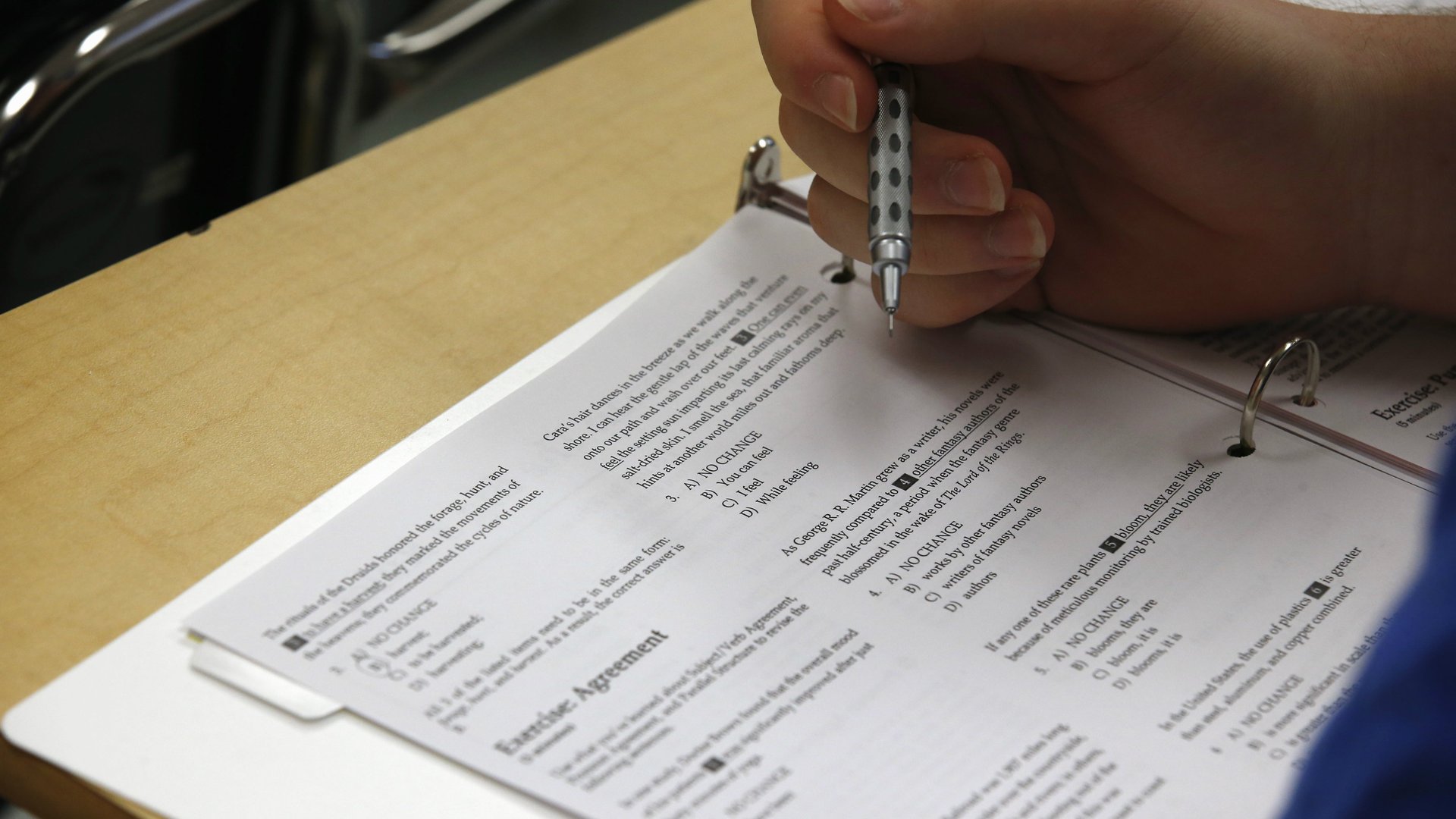The last two digits of SAT scores have an odd influence on whether students retake it
On October 6th, tens of thousands of high school students with take the SAT. For many of them, it’s won’t be the first time. From 2006 to 2014, about 54% of students who took the college entrance exam retook it at least once.


On October 6th, tens of thousands of high school students with take the SAT. For many of them, it’s won’t be the first time. From 2006 to 2014, about 54% of students who took the college entrance exam retook it at least once.
A new study circulated by the National Bureau of Economic Research finds there is a peculiar reason why many of these students retake the test (paywall). The study, conducted by economists at Harvard University, the University of Missouri and Georgia State University, finds that students who score just below a 100 point threshold are substantially more likely take another shot. For example, 67.3% of students who received a 1990 tried again, compared to only 64.8% of students who scored 2000.
The study’s data come from a period when SAT scores ranged from 600 to 2400. Beginning in 2016, the test returned to a range of 400 to 1600, as it had prior to 2005.
Overall, students just below a multiple of 100 are one percentage point more likely to take the test again, but the effect is much larger for higher scoring students. Students who received a 2300 were 11 percentage points less likely to retake the test than those who got a 2290.
The phenomenon is a result of what is called “left-digit bias.” Economic and psychological research finds that people tend to heavily focus on digits that are further to the left in a number. That is why products are so often priced at $4.99 rather than $5.00—it really makes a difference to how likely people are to make a purchase (pdf).
The researchers exploit this strange kink in retake probability at 100 point thresholds to analyze the impact of retaking the test. Just looking at how much better the average student does the second time they took the test wouldn’t necessarily demonstrate that retaking the test is always better. It might just be that students who retake the exam know they underperformed the first time. Examining the retake performance of students who performed just below a one hundred point threshold allows the researchers to better isolate the impact of taking the test again.
The researchers found that the average student improved their overall score by almost 50 points on their retake. (This was on the old 2400 scale.) Even more importantly, when students take the test more than once, most colleges add up their best performance in the math and reading and and writing sections to create a superscore, and use that superscore to assess applicants. On average, taking the test again improved superscores by 90 points, during the time period the researchers studied. The average score improvement was even greater for students who performed poorly the first time.
The researchers point out that the students who would benefit most from retaking the test are the least likely to do so. Low-income students are 20% less likely to retake than high-income students, and underrepresented minorities in higher education (blacks, hispanics, and native Americans) are 9% less likely than whites. The researchers claim that increasing retake rates among these groups would close the SAT score gaps between these groups—high-income students and whites tend to receive higher scores. And since higher SAT scores lead more students to attend four-year colleges, it would also make a dent in the gap in college attendance between low- and high-income students.
They argue that one important way to increase retake rates for low-income students and underrepresented minorities would be to encourage more of them to take the test in 11th grade. These students are much more likely to first take the exam in 12th grade, giving them few opportunities to try again.